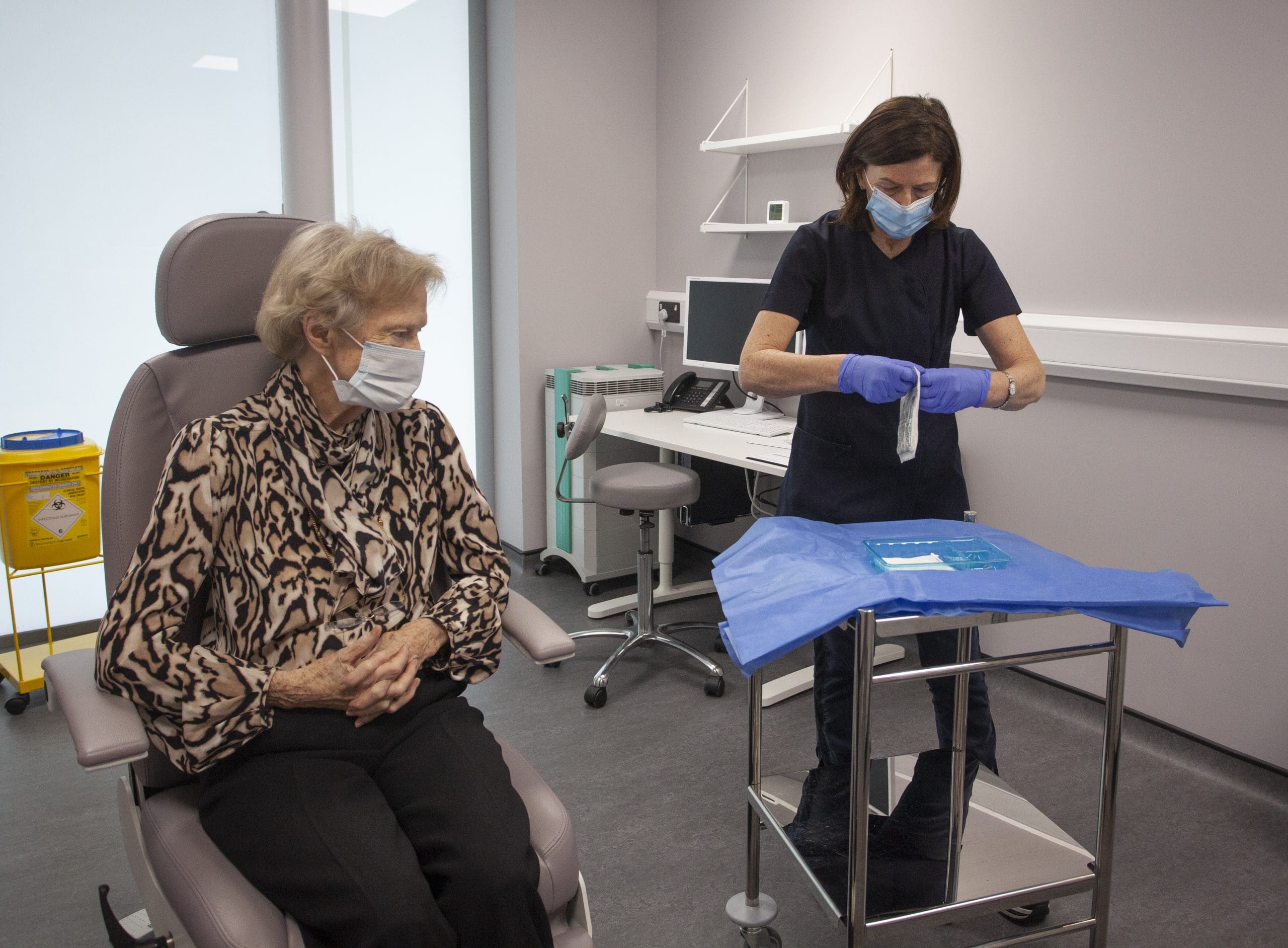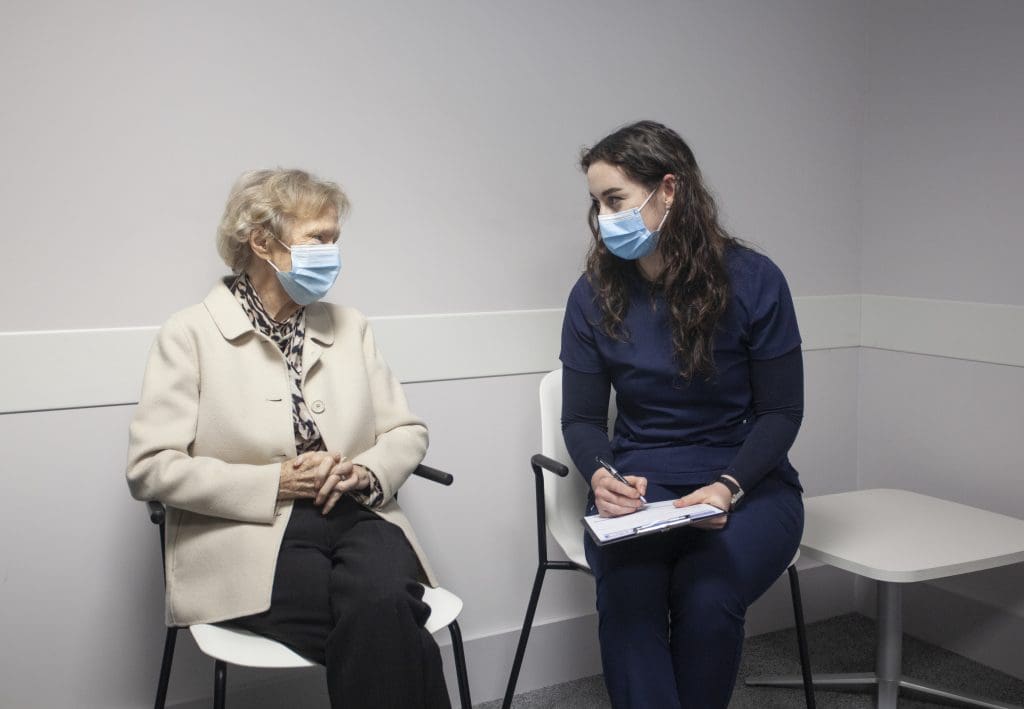
What to expect at your eye injection appointment at Progressive Vision
What conditions are treated with eye injections?
The conditions we treat with injections are:
- wet macular degeneration (also known as age-related macular degeneration or AMD)
- diabetic retinopathy
- diabetic eye disease
- retinal vein occlusion
How do eye injections help to treat eye conditions?
These injections aim to prevent, and potentially reverse, vision loss.
Depending on the response to the treatment the time between injections will vary.
The initial loading dose consists of 3 injections at 4 weeks apart.
The patient is then reviewed and if the eye is responding well, the doctor will stretch the time to 5 weeks apart by 3 injections and review again aiming to stretch the interval as far as possible.
Every patient is different in their response.
What are the medications used in eye injections?
- The drugs used are Avastin, Eylea or Lucentis which are all Anti-VEGF medicines which block VEGF.
- Vascular endothelial growth factor (VEGF) is a protein produced by cells in your body.
- VEGF produces new blood vessels when your body needs them.
Why Do We Want to Stop VEGF From Working?
Sometimes cells can produce too much VEGF. When this happens, abnormal blood vessels can grow in your eye. These abnormal blood vessels damage your eye and harm your vision. This can lead to low vision or blindness.
Anti-VEGF medicine blocks VEGF, slowing the growth of blood vessels in the eye. This slows or stops damage from the abnormal blood vessels and slows down vision loss. Sometimes it can even improve vision.

What to expect on injection day at the clinic
We understand that eye disease with its possibility of sight loss can be a great worry so we make sure our patients are kept informed every step of the way. It means you will be treated with respect as a unique individual from reception to examination and all treatment will be delivered with kindness to the highest standards of professional eye care.
Anyone who is having this treatment for the first time is given extra time and further guidance and reassurance when they arrive. It is important to us that each patient understands the process and feels free to ask questions if they are unsure.
Each patient is given a specific appointment time. Following check in at the reception desk, a member of the eye team will take you to the waiting area for eye preparation.
Firstly, each patient’s hands are sanitized, confirmation of which eye is being treated is done and the area around the eye will be cleaned.
Individual trays are made up on arrival for each patient, the first drop instilled is a dilating drop. This may cause slight discomfort for around 30 secs.
The second drop is the numbing drop which is mixed with Videne antiseptic solution to reduce the risk of infection. This numbing drop will be instilled three – four times over 15-20 minutes prior to injection.
When the patient is called into the room by the surgical assistants, they will be given a seat in the procedure chair and it will be reclined into a comfortable position for the patient and suitable for the doctor to carry out the procedure.
When the doctor arrives in, they will be greeted, their file will be checked, name and date of birth confirmed and next appointment finalised.
One more numbing drop will be instilled and the doctor will proceed, eye is cleaned again.
The eye doctor will direct the patient to look down slightly and the doctor approaches the patient from over their shoulder so that the patient does not see the needle.
The needle is very thin. You will probably feel only pressure and not a sharp sensation. The injection is through the white part of the eye.
Your eye doctor will then clean your eye to remove the antiseptic. They will also check the eye to make sure there are no problems or complications.
Is the procedure painful?
No- eye injections are not painful as numbing drops are used in advance of the treatment. The patient should only feel a slight pressure in the eye when the injection is being done as the eye is gently held open.
Following this an antibiotic drop is instilled to reduce risk of infection.
The eye is cleaned and the doctor has a look in with a lens to make sure everything is ok.
Sometimes the patient’s vision can be a little hazy initially. We advise all patients that if they have any severe pain, discomfort or redness following the procedure they call us.
How long does the appointment take?
The typical injection visit usually takes about 50 minutes from start to finish. If you are scheduled to have vision and OCT tests on the day of your injection, please allow 90 minutes for your visit.
Can I drive home afterwards?
Patients are advised not to drive after the procedure as their eye/eyes have been dilated.
What to expect after your injection
Your eye may feel quite gritty for 24 – 48 hours after the injection. This sensation should get continually better as time goes on.
We may apply a lubricating drop immediately after the procedure which you can re-apply if the grittiness persists.
A double eye pad or bandage contact lens may be used to cover your eye temporarily for two to three hours to avoid you rubbing your eye accidentally and to prevent it drying out.
Blobs or small specks in your vision (floaters) may be seen after the injection. This is usually the medication and should not affect your vision and will disappear in a few days.
Signs of possible complications
We ask you to phone us urgently if your eye feels worse instead of better as time goes on.
The following conditions – especially if they occur after 48 hours – can be warning signs of a complication:
- sensitivity to light or eye pain
- blurred vision
- a red eye (a localised red patch of redness at the injection site is normal)
- floaters or flashes that are getting worse or a dark shadow or curtain from above or below
- A rare but important warning sign is a milk-like fluid level in front of your iris (the coloured bit of your eye)
If any of the above warning signs occur, please contact Progressive Vision on (01) 270 7082.
If outside of office hours, please contact the Emergency Department of the Royal Victoria Eye and Ear Hospital on 01 664 4600.